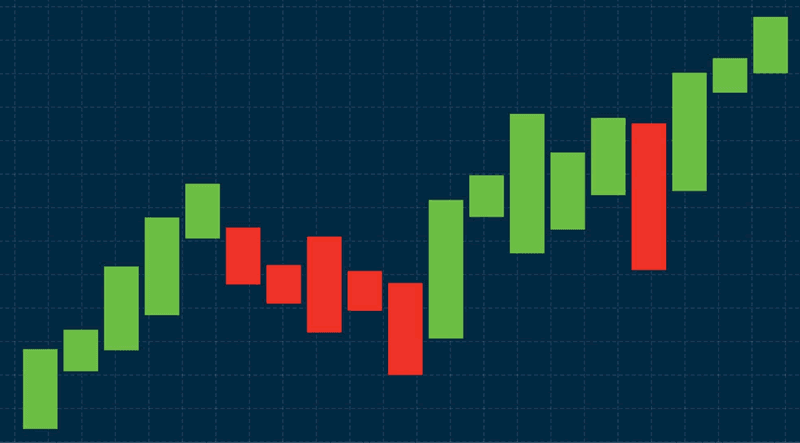MarketLens
Is Fidelity High Yield Factor ETF (FDHY) a Good Choice for Fixed Income Investors?
Key Takeaways
- High Dividend Yield: FDHY offers an attractive annual dividend yield of 6.5%, making it a compelling option for income-seeking investors.
- Strong Performance: The ETF has shown robust performance with a one-month return of 1.8% as of August 2024, benefiting from favorable market conditions.
- Cost Efficiency: With an expense ratio of 0.45%, FDHY is priced competitively within the cheapest fee quintile among its peers.
- Diversified Portfolio: The ETF’s portfolio is composed entirely of high-yield bonds, with significant holdings in various sectors, providing diversification benefits.
- Market Outlook: The current economic environment, characterized by potential interest rate cuts and controlled inflation, is favorable for high-yield bonds.
Introduction
Portfolio Composition and Performance
FDHY’s portfolio is composed entirely of high-yield bonds, commonly known as junk bonds, which offer higher yields in exchange for greater credit risk. As of August 6, 2024, the ETF’s top 10 holdings account for 13.3% of its assets, with significant investments in sectors such as energy, healthcare, and consumer services. The top holdings include:
- Fidelity Securities Lending Cash Central Fund – 5.46%
- FMG Resources (August 2006) Pty Ltd. 5.875% – 2.12%
- Vector Group Ltd 5.75% – 1.65%
- Mineral Resources Ltd. 9.25% – 1.53%
- Davita Inc 4.625% – 1.38%
- Northern Oil And Gas, Inc. 8.75% – 1.33%
- Performance Food Group Inc 4.25% – 1.29%
- GFL Environmental Inc. 4% – 1.09%
- Nexstar Media Inc. 4.75% – 1.05%
- Iron Mountain Information Management Services Inc 5% – 0.94%
The ETF’s one-month performance of 1.8% as of August 2024 highlights its ability to generate returns in the current market environment. Additionally, FDHY’s trailing twelve months (TTM) dividend yield of approximately 6.57% is notably higher than many of its peers, including the Fidelity Total Bond ETF (FBND), which has a yield of 4.54%.
Cost Efficiency
One of FDHY’s key advantages is its cost efficiency. With an expense ratio of 0.45%, the ETF is priced within the cheapest fee quintile among its peers. This cost advantage is significant for long-term investors, as lower fees can enhance net returns over time. The competitive pricing, combined with the ETF’s strong performance, makes FDHY an attractive option for cost-conscious investors seeking high-yield opportunities.
Market Context and Economic Outlook
The current economic environment is favorable for high-yield bonds, with several factors contributing to this positive outlook:
- Interest Rate Cuts: The increasing likelihood of interest rate cuts by the Federal Reserve is expected to benefit high-yield bonds. Historically, high-quality fixed income indices have outperformed in periods following the last rate hike, and the correlation between starting yields and total returns over subsequent years suggests potential for favorable outcomes.
- Controlled Inflation: With inflation appearing to be under control, the bond market is less likely to experience significant volatility due to unexpected inflationary pressures. This stability supports the performance of high-yield bonds.
- Diversification Benefits: High-yield bonds offer diversification benefits, particularly in a balanced portfolio. As stock and bond returns are expected to move in opposite directions again, high-yield bonds can provide a balanced risk-return profile.
However, investors should remain cautious of the inherent risks associated with high-yield bonds, including market sensitivity to economic, monetary, or geopolitical events, and potential increases in default rates.
Comparative Analysis
When compared to other high-yield bond ETFs, FDHY stands out due to its high dividend yield and competitive expense ratio. For instance, the iShares High Yield Systematic Bond ETF (HYDB) has historically outperformed the Bloomberg US Corporate High Yield Index by an average annual outperformance of 0.63%, emphasizing the benefits of a systematic approach to managing credit risk. However, FDHY’s yield of 6.5% and expense ratio of 0.45% position it as a strong contender in the high-yield bond ETF market.
Strategic Considerations for Investors
For individual investors considering FDHY, several strategic considerations should be taken into account:
- Income Generation: FDHY’s high dividend yield makes it an attractive option for income-seeking investors. The ETF’s focus on high-yield bonds provides a steady stream of income, which can be particularly beneficial in a low-interest-rate environment.
- Risk Management: While high-yield bonds offer higher returns, they also come with greater credit risk. Investors should assess their risk tolerance and consider diversifying their portfolios to mitigate potential losses from defaults.
- Market Timing: Given the current economic outlook, with potential interest rate cuts and controlled inflation, the timing may be favorable for investing in high-yield bonds. However, investors should remain vigilant of market conditions and be prepared for potential volatility.
Future Outlook
Looking ahead, the performance of high-yield bonds, including FDHY, will be influenced by several factors:
- Economic Growth: Continued economic growth and a robust labor market will support the performance of high-yield bonds. However, any signs of economic slowdown or increased default rates could negatively impact returns.
- Interest Rate Movements: The Federal Reserve’s monetary policy decisions will play a crucial role in shaping the bond market. Interest rate cuts are expected to benefit high-yield bonds, but any unexpected rate hikes could lead to increased volatility.
- Global Market Dynamics: The performance of high-yield bonds may vary by region, with emerging market bonds offering attractive valuations compared to U.S. high-yield bonds. Investors should consider global market dynamics when making investment decisions.
Conclusion
The Fidelity High Yield Factor ETF (FDHY) presents a compelling investment opportunity for fixed income investors seeking high dividend yields and strong performance. With a well-diversified portfolio, competitive expense ratio, and favorable market conditions, FDHY is well-positioned to deliver attractive returns. However, investors should remain mindful of the inherent risks associated with high-yield bonds and consider their risk tolerance and investment objectives when making decisions. As the economic landscape evolves, FDHY’s performance will be closely tied to interest rate movements, economic growth, and global market dynamics, making it essential for investors to stay informed and adaptable.
Related Articles
Category
You may also like
No related articles available
Breaking News
View All →No topics available at the moment






